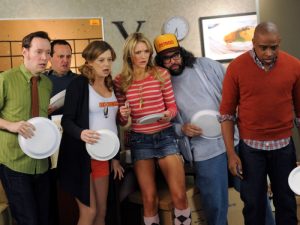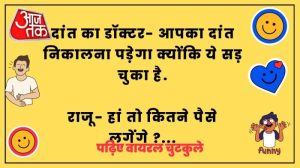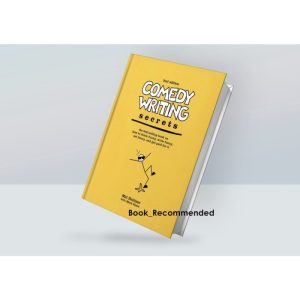Ever wondered about the booming world of stand-up comedy tours? From the hilarious one-liners to the meticulously planned logistics, there’s a fascinating story behind those sold-out shows. This exploration dives into the market analysis, diverse formats, clever marketing strategies, and technological advancements shaping the industry. We’ll even uncover the secrets behind successful comedic delivery and explore the challenges and opportunities that await in this ever-evolving landscape.
Get ready to laugh your way through a comprehensive look at how stand-up comedy tours are created, marketed, and experienced, from the comedian’s perspective to the audience’s roaring laughter. We’ll examine everything from the financial aspects and competitive strategies to the impact of social media and the future of the industry. Buckle up, it’s going to be a wild ride!
Market Analysis of Stand-Up Comedy Tours
The stand-up comedy tour market is a dynamic and lucrative industry, constantly evolving with the changing tastes of audiences and the innovative strategies of performers and promoters. Analyzing this market requires understanding its size, growth potential, key demographics, competitive landscape, and pricing strategies. This analysis will provide a snapshot of the current state of the industry, offering valuable insights for those interested in participating or investing.
Current Market Size and Growth Potential
Precise figures for the global stand-up comedy tour market are difficult to obtain due to the fragmented nature of the industry and the lack of comprehensive, publicly available data. However, anecdotal evidence and reports from major players suggest significant growth. The rise of streaming platforms has broadened the reach of comedians, creating a larger pool of potential fans who might then attend live tours.
Furthermore, the increasing demand for live entertainment experiences, after a period of pandemic-related restrictions, points towards a sustained period of growth. While specific numbers are elusive, the market is undoubtedly substantial and expanding, particularly in regions with established comedy scenes and a strong appetite for live performance. The growth is fueled by factors like increasing disposable income in certain demographics and the enduring appeal of live comedy as a form of entertainment.
For example, the success of major tours by established comedians like Kevin Hart or Dave Chappelle illustrates the significant revenue potential within this market segment.
Key Demographics of Stand-Up Comedy Tour Attendees
The primary demographic for stand-up comedy tours is generally young adults and middle-aged individuals, ranging from 25 to 55 years old. However, this is a broad generalization, and the specific demographics vary greatly depending on the comedian’s style, material, and marketing strategies. Comedians with more family-friendly or broader appeal will naturally attract a wider age range, while those with more niche or edgy content might attract a younger, more specific audience.
Geographic location also plays a role; urban areas with larger populations and diverse entertainment options often have a higher concentration of comedy show attendees. Income level is another factor; ticket prices can vary widely, making comedy tours accessible to a range of income brackets, although higher-priced shows tend to attract higher-income attendees. Furthermore, educational attainment might correlate with attendance, with higher levels of education potentially indicating a greater propensity for attending cultural events like stand-up comedy shows.
Competitive Landscape of the Stand-Up Comedy Tour Industry
The stand-up comedy tour industry is highly competitive, with a mix of established players, independent promoters, and emerging comedians vying for audience attention and market share. Major players often leverage established networks, significant marketing budgets, and pre-existing fan bases to secure larger venues and command higher ticket prices. Their strategies frequently involve strategic partnerships with ticketing platforms, sponsorships, and extensive media promotion.
Independent promoters and smaller-scale tours often rely on more grassroots marketing, focusing on building relationships within local communities and utilizing social media platforms to reach potential audiences. The competition is intense, forcing all participants to constantly innovate and adapt to evolving audience preferences and market trends. Successful strategies often involve identifying niche audiences, offering unique experiences, and leveraging social media effectively to build brand awareness and generate ticket sales.
Pricing Strategies of Major Stand-Up Comedy Tour Operators
The pricing strategies of stand-up comedy tour operators vary significantly based on factors such as the comedian’s popularity, venue size, location, and ticket demand. Generally, ticket prices increase with the comedian’s fame and the desirability of the venue.
| Tour Operator | Average Ticket Price | Ticket Sales Platform | Target Audience |
|---|---|---|---|
| Live Nation Comedy | $50 – $150 | Ticketmaster, Live Nation Website | Broad demographic, focusing on established comedians with mass appeal. |
| AEG Presents | $40 – $120 | Ticketmaster, AXS | Similar to Live Nation, targeting a broad audience with established acts. |
| Independent Promoters (Variable) | $25 – $75 | Eventbrite, See Tickets, Local Venues | More niche audiences, often focusing on emerging or local comedians. |
Popular Stand-Up Comedy Tour Formats
The world of stand-up comedy tours is diverse, offering various formats to suit different comedian styles, budgets, and target audiences. Understanding these formats is crucial for both comedians planning their tours and promoters seeking profitable ventures. The choice of format significantly impacts marketing strategies, financial projections, and overall tour success.
Solo Tours
Solo tours are the most common format, featuring a single comedian performing their unique material across multiple venues. This allows for complete creative control and a focused brand identity. Successful solo tours often leverage strong social media engagement, targeted advertising based on demographic data, and pre-sale ticket strategies to maximize attendance. Comedians like Kevin Hart have built empires on highly successful solo tours, utilizing sophisticated marketing campaigns that include movie tie-ins and endorsements.
The advantage of a solo tour is complete creative freedom and maximized profit potential (after expenses). However, the disadvantage lies in the heavier workload on the comedian and the higher financial risk if ticket sales are low. The comedian bears the entire financial burden, including venue rental, marketing, and travel.
Multi-Comedian Tours
Multi-comedian tours feature several comedians performing on a single show, often sharing the workload and expenses. This format can attract a broader audience, as it offers variety and potentially caters to different comedic tastes. Examples include tours featuring a blend of established and emerging comedians, which can be very effective. The marketing approach often highlights the diverse comedic styles of the participating comedians, emphasizing the “value” of seeing multiple acts for the price of one ticket.
The advantage is shared risk and a broader appeal, potentially attracting a larger audience than a solo act might. The disadvantage is the need for careful coordination among the comedians and the potential for creative conflicts. Profit sharing needs to be carefully negotiated upfront.
Festival Tours
Festival tours involve a comedian performing at various comedy festivals across a geographical area or even internationally. This format leverages the pre-existing audience and marketing infrastructure of the festivals themselves. Many smaller, less-known comedians gain significant exposure by participating in festivals, often leading to future solo tour opportunities. The marketing relies heavily on the festival’s promotion, which minimizes the individual comedian’s marketing efforts.
The advantage is reduced marketing costs and exposure to a large audience, while the disadvantage is less creative control and a smaller percentage of the revenue. The comedian’s earnings are often based on a percentage of the festival’s overall ticket sales.
Hypothetical Tour Format: Gen Z Comedy Explosion
This tour targets Gen Z audiences by featuring emerging comedians known for their relatable, socially conscious, and often absurdist humor, delivered in a format that integrates social media engagement and interactive elements. The marketing strategy would heavily utilize TikTok, Instagram, and other platforms popular with Gen Z, showcasing short clips of the comedians’ material and behind-the-scenes content. The tour would include interactive segments, Q&A sessions, and opportunities for audience participation, creating a more immersive experience than a traditional stand-up show.
The tour would be branded as an “experience” rather than just a series of stand-up performances. The advantages are strong engagement with the target demographic and a unique, memorable experience. The disadvantage lies in the potential challenge of predicting audience interest in emerging comedians and the higher production costs associated with interactive elements. The success of this format would heavily rely on pre-show buzz and viral marketing strategies.
Marketing and Promotion of Stand-Up Comedy Tours

Successfully launching and promoting a stand-up comedy tour requires a multifaceted approach that leverages various marketing channels to reach the target audience. This involves strategic planning, consistent messaging, and a keen understanding of your comedian’s brand and the preferences of comedy enthusiasts. Effective marketing isn’t just about selling tickets; it’s about building anticipation and excitement around the tour.
Social Media Marketing Strategies
Social media platforms offer powerful tools for reaching potential audience members directly. A comprehensive strategy should include engaging content such as short video clips of the comedian’s best bits, behind-the-scenes glimpses of tour preparations, interactive polls and Q&A sessions, and targeted advertising campaigns based on demographics and interests. Utilizing relevant hashtags and collaborating with comedy influencers can significantly boost reach and engagement.
For example, a comedian could partner with a popular podcast to promote their tour to a pre-existing, engaged audience. This approach fosters a sense of community and allows for direct interaction with fans, building anticipation for upcoming shows. Regular posting, consistent branding, and responding to comments are crucial for maintaining audience engagement.
Email Marketing and its Effectiveness
Email marketing remains a highly effective tool for direct communication with potential ticket buyers. Building an email list through website sign-ups and social media promotions allows for targeted messaging about tour dates, special offers, and exclusive content. Segmented email campaigns, tailored to different audience groups based on location or past purchasing behavior, can significantly improve conversion rates. For instance, a comedian could send a separate email to fans in each city on the tour, highlighting local details and creating a more personalized experience.
The use of compelling subject lines, visually appealing email designs, and clear calls to action are essential for maximizing engagement and driving ticket sales.
The Role of Public Relations and Media Outreach
Public relations play a vital role in generating positive media coverage and building the comedian’s profile. This involves pitching stories to relevant media outlets, such as local newspapers, entertainment blogs, and comedy publications. Securing interviews on podcasts or radio shows can expose the comedian to a wider audience and create buzz around the tour. Press releases announcing tour dates and highlighting unique aspects of the show can be distributed to media contacts.
A strong media presence helps establish credibility and builds trust with potential audience members. For example, securing a feature in a major entertainment magazine can significantly increase ticket sales.
Branding and Visual Identity in Attracting Audiences
A strong brand and visual identity are essential for creating a memorable and recognizable presence. This includes developing a consistent logo, color scheme, and typography across all marketing materials. High-quality photography and videography showcasing the comedian’s personality and style are crucial for creating a compelling visual representation of the tour. A well-designed website and social media profiles reinforce the brand identity and provide a central hub for all tour information.
Consistency in branding builds recognition and helps audiences connect with the comedian’s unique style and personality, fostering loyalty and repeat business.
Potential Marketing Channels: Strengths and Weaknesses
A diverse marketing strategy utilizes multiple channels to maximize reach and impact.
- Social Media (Facebook, Instagram, TikTok, Twitter): Strengths: Wide reach, direct audience engagement, cost-effective advertising options. Weaknesses: Requires consistent effort, algorithm changes can impact reach, potential for negative comments.
- Email Marketing: Strengths: Direct communication, high conversion rates, allows for targeted messaging. Weaknesses: Requires building an email list, potential for emails to be marked as spam.
- Website: Strengths: Central hub for tour information, creates a professional image. Weaknesses: Requires ongoing maintenance, needs effective for optimal search ranking.
- Public Relations/Media Outreach: Strengths: Builds credibility, generates positive media coverage. Weaknesses: Can be time-consuming, success is not guaranteed.
- Partnerships (Venues, Sponsors, Influencers): Strengths: Expanded reach, access to new audiences. Weaknesses: Requires negotiation and collaboration.
- Paid Advertising (Google Ads, Social Media Ads): Strengths: Targeted reach, measurable results. Weaknesses: Can be expensive, requires ongoing optimization.
The Role of Technology in Stand-Up Comedy Tours
Technology has revolutionized the stand-up comedy industry, transforming how comedians connect with audiences, sell tickets, and manage their tours. From streamlined ticketing systems to sophisticated data analysis, technology plays a crucial role in the success of modern comedy tours, impacting everything from pre-show buzz to post-show analysis. This section explores the multifaceted influence of technology on the business and experience of stand-up comedy tours.
Ticketing Platforms and Online Booking Systems
Online ticketing platforms like Ticketmaster, Eventbrite, and See Tickets are indispensable for selling tickets to stand-up comedy shows. These platforms offer a user-friendly interface for both comedians and fans, simplifying the booking process. They provide secure payment gateways, manage inventory, and offer various marketing tools to promote events. Furthermore, these platforms often integrate with social media, allowing for seamless promotion across different channels.
The ease of access and widespread adoption of these platforms have significantly increased ticket sales and broadened the reach of comedy tours. For example, a comedian using Ticketmaster can leverage its extensive network to reach a wider audience than through traditional methods alone, significantly increasing potential ticket sales.
Social Media’s Influence on Audience Engagement and Ticket Sales
Social media platforms like Instagram, Twitter, Facebook, and TikTok are powerful tools for engaging audiences and driving ticket sales. Comedians can use these platforms to share promotional materials, interact with fans, build anticipation for upcoming shows, and create a sense of community. Targeted advertising campaigns on these platforms allow comedians to reach specific demographics, maximizing their marketing efforts. For instance, a comedian could use Instagram to showcase behind-the-scenes glimpses of their tour preparation, building excitement and fostering a personal connection with potential ticket buyers.
The use of engaging video content, interactive polls, and live Q&A sessions can further increase audience engagement and lead to higher ticket sales. Analyzing social media engagement data can also help refine marketing strategies, ensuring that resources are allocated effectively.
Data Analytics in Optimizing Tour Strategies
Data analytics provides valuable insights into audience behavior, enabling comedians to optimize their tour strategies. By tracking ticket sales data, social media engagement, and audience demographics, comedians can identify trends, understand their target audience better, and make informed decisions about venue selection, show scheduling, and marketing campaigns. For example, if data reveals a higher concentration of fans in a specific geographic region, the comedian can adjust their tour schedule to include more shows in that area.
This data-driven approach helps maximize revenue and minimize financial risks associated with touring. The use of analytics tools allows for a more efficient allocation of resources, leading to greater profitability and tour success.
A Hypothetical Mobile App for Enhancing the Fan Experience
Imagine a mobile app called “LaughTrack,” designed to enhance the fan experience during a stand-up comedy tour. LaughTrack would offer features such as: a personalized event calendar showcasing upcoming shows, interactive maps to navigate venues easily, exclusive behind-the-scenes content, the ability to purchase merchandise directly through the app, and a forum for fans to connect and share their experiences.
The app could also integrate with ticketing platforms, providing a seamless experience for ticket purchasing and management. Furthermore, the app could incorporate gamification elements, such as earning points for attending shows and unlocking exclusive content, thereby rewarding loyal fans and fostering a sense of community among attendees. Such an app would significantly enhance fan engagement and create a memorable experience, potentially leading to repeat attendance and increased brand loyalty.
Entertainment & Humor
Stand-up comedy, at its core, is the art of translating personal experiences and observations into laughter. The effectiveness of a stand-up routine hinges on a delicate balance of comedic style, audience connection, and the comedian’s ability to craft a narrative that resonates. This section delves into the comedic elements that make a stand-up performance memorable and successful.
Comedic Styles and Their Effectiveness
Different comedic styles cater to various tastes and sensibilities. Observational comedy, for example, finds humor in everyday situations and societal quirks, often employing witty commentary and relatable anecdotes. Think Jerry Seinfeld, whose routines meticulously dissect the minutiae of daily life. Conversely, absurdist comedy embraces the illogical and unexpected, defying conventional logic for comedic effect. The work of Mitch Hedberg, with his surreal and often nonsensical one-liners, exemplifies this style.
Finally, anecdotal comedy uses personal stories and experiences as the foundation for humor, relying on the narrative arc and relatable details to elicit laughter. Comedians like Bill Burr masterfully weave personal experiences into larger social commentaries, using humor to unpack complex issues. The effectiveness of each style depends heavily on the comedian’s delivery, timing, and the audience’s receptiveness.
Comparative Analysis of Comedic Approaches
Comparing the comedic approaches of Jerry Seinfeld, Bill Burr, and Mitch Hedberg reveals the diversity within the genre. Seinfeld’s observational style is precise and meticulously crafted, relying on sharp wit and relatable scenarios. Burr’s approach is more aggressive and confrontational, often using anger and frustration as comedic tools to explore social and political issues. Hedberg’s absurdist style is characterized by its unexpected turns and nonsensical humor, relying on wordplay and unconventional perspectives.
While vastly different, all three are masters of their chosen styles, demonstrating the versatility of stand-up comedy. Seinfeld’s clean, observational humor appeals to a broader audience, while Burr’s edgy material resonates with those who appreciate a more cynical and provocative perspective. Hedberg’s unique brand of surrealism appeals to those who appreciate intellectual humor and wordplay.
Audience Engagement and Interaction
Audience engagement is paramount to a successful stand-up performance. A comedian’s ability to read the room, respond to audience reactions, and incorporate impromptu material demonstrates skill and adaptability. This interaction creates a dynamic, improvisational element, making each performance unique. A comedian who actively engages the audience, whether through call-and-response bits, direct interaction, or by incorporating audience suggestions, fosters a sense of shared experience and intimacy.
This connection transforms a performance from a monologue into a conversation, strengthening the bond between performer and audience and enhancing the overall comedic experience.
Evolution of Stand-Up Comedy
Stand-up comedy has evolved significantly throughout its history. Early forms, often found in vaudeville and nightclub acts, were less structured and more reliant on physical comedy and stock characters. The rise of television in the mid-20th century provided a platform for stand-up comedians to reach wider audiences, shaping the genre’s development. The emergence of counter-culture movements in the 1960s and 70s led to a more politically charged and socially conscious form of stand-up, with comedians like Richard Pryor pushing boundaries with their material.
The late 20th and early 21st centuries have witnessed an explosion of diverse voices and styles, reflecting a broader range of experiences and perspectives. The influence of social media and streaming platforms has also changed the way stand-up is consumed and distributed, opening up new avenues for exposure and interaction.
Challenges and Opportunities in the Stand-Up Comedy Tour Industry

The stand-up comedy tour industry, while seemingly glamorous, faces a complex web of challenges and is simultaneously presented with exciting opportunities driven by technological advancements and evolving audience preferences. Navigating these aspects is crucial for comedians and organizers alike to ensure longevity and success in this dynamic field.
Major Challenges Faced by Stand-Up Comedians and Tour Organizers
The industry is characterized by significant hurdles. These range from the highly competitive nature of the field, requiring consistent effort to build a fanbase and secure gigs, to the unpredictable nature of ticket sales, which can be heavily impacted by external factors. Furthermore, securing suitable venues, managing logistics, and handling marketing and promotion all contribute to the complexities of running a successful tour.
Financial instability is also a common concern, with many comedians relying on multiple income streams to support themselves between tours. Finally, the ever-changing tastes of audiences demand constant adaptation and evolution of comedic material.
Opportunities Presented by Emerging Technologies and Changing Audience Preferences
The digital age presents a wealth of opportunities. Streaming platforms offer new avenues for reaching audiences beyond traditional live performances, allowing comedians to build their brand and generate income through online content. Social media provides powerful tools for direct engagement with fans, marketing tours, and building anticipation. Moreover, data analytics can inform strategic decisions regarding tour routing, ticket pricing, and marketing campaigns, optimizing reach and profitability.
The growing demand for diverse and inclusive comedy also opens doors for comedians who represent underrepresented groups, creating a more representative and engaging comedic landscape.
Impact of External Factors on the Stand-Up Comedy Tour Industry
External factors significantly influence the industry’s trajectory. Economic downturns can directly impact ticket sales as disposable income decreases, leading to reduced audience attendance. Social and political trends shape comedic content and audience expectations, demanding sensitivity and adaptability from comedians. For example, the rise of social awareness has led to a greater demand for comedic material that addresses social issues responsibly and thoughtfully.
Conversely, significant global events, such as pandemics, can drastically disrupt tour schedules and even halt the industry temporarily.
A Plan to Address the Challenge of Ticket Sales
A key challenge lies in driving ticket sales. To address this, a multi-pronged approach is necessary. This plan focuses on leveraging digital marketing and building community engagement. Firstly, a targeted social media campaign will be implemented, using data analytics to identify key demographics and tailor advertising accordingly. Secondly, partnerships with relevant businesses and organizations will be forged to expand reach and offer promotional opportunities.
Thirdly, early-bird discounts and loyalty programs will be introduced to incentivize early purchases and reward repeat customers. Finally, collaborations with other comedians or influencers will be explored to cross-promote tours and expand the audience base. The success of this plan will be measured by tracking ticket sales data, website traffic, and social media engagement metrics. For example, comparing ticket sales before and after implementing the social media campaign would demonstrate its effectiveness.
A similar analysis would be performed for other aspects of the plan, providing data-driven insights for future improvements.
Final Conclusion
So, there you have it – a whirlwind tour (pun intended!) of the stand-up comedy tour industry. From analyzing market trends and understanding different comedic styles to mastering marketing techniques and leveraging technology, we’ve covered a lot of ground. The future of stand-up comedy tours is bright, filled with opportunities for innovation and growth. Whether you’re a budding comedian, a seasoned tour organizer, or simply a comedy enthusiast, understanding this dynamic industry is key to appreciating the laughter and the hard work behind those unforgettable shows.
Get out there and experience the magic live!
FAQ Insights
What’s the average lifespan of a stand-up comedy tour?
It varies wildly! Some tours are short, focused runs, while others can last for years, depending on the comedian’s popularity and the demand.
How do comedians choose their tour dates and locations?
A combination of factors plays a role: venue availability, audience demographics, marketing analysis, and even the comedian’s personal preferences.
What are the biggest challenges for smaller, independent comedians trying to tour?
Securing bookings, managing expenses, marketing themselves effectively, and building a loyal following are significant hurdles.
How much does it cost to put on a stand-up comedy tour?
Costs vary dramatically based on scale; from small, independent tours with minimal expenses to large-scale productions with substantial investments in marketing, venues, and crew.






